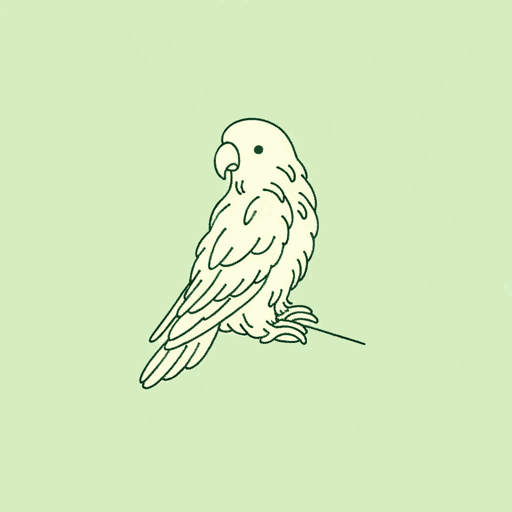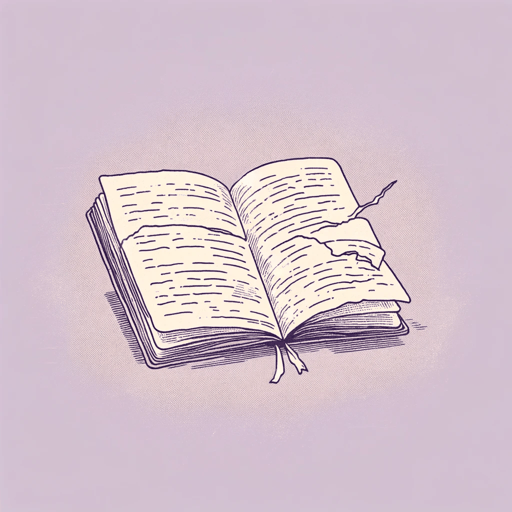45 pages • 1 hour read
Julian BarnesFlaubert's Parrot
Fiction | Novel | Adult | Published in 1984A modern alternative to SparkNotes and CliffsNotes, SuperSummary offers high-quality Study Guides with detailed chapter summaries and analysis of major themes, characters, and more.
Summary and Study Guide
Overview
Flaubert’s Parrot is a novel by Julian Barnes, published in 1984. The book is a collection of biographical research, literary criticism, and philosophical considerations on the relationship between writers and their works, told from the perspective of Geoffrey Braithwaite, a 60-year-old retired doctor and widower. Having become something of an amateur expert on celebrated author Gustave Flaubert, Geoffrey searches for the truth about the French writer’s life. His quest for information revolves around determining which of two stuffed parrots once sat on Flaubert’s desk.
The novel begins with Geoffrey’s trip to Rouen. He tours locations important to Gustave Flaubert, providing a running commentary of the writer’s life. While visiting a Flaubert museum, he encounters the stuffed parrot which may have inspired a similar ornament in Flaubert’s book, Un Coeur Simple. The next day, Geoffrey encounters another stuffed parrot while visiting another museum. Both claim to be Flaubert’s parrot. Geoffrey decides to find out the truth about which one is real.
Geoffrey recounts Flaubert’s life from three different perspectives. He begins with a detailed traditional biography, charting Flaubert’s life from his birth to his death. This entry suggests that Flaubert died a happy man. The second biography focuses on the tragedies in the writer’s life, beginning with the deaths of his older siblings, before Flaubert was even born. This entry suggests that Flaubert’s life was little more than a string of tragedies, punctuated by occasional literary success and controversy. The third entry uses Flaubert’s own journals to chart the writer’s regrets from a first-person perspective.
Observing the difficulty of finding a single, objective truth, Geoffrey acknowledges that the role of the biographer is almost impossible. He describes meeting Ed Winterton, an American academic. Ed reveals to Geoffrey that he has obtained Flaubert’s letters to Juliet Herbert. The letters have the potential to redefine the common perception of Flaubert’s romantic life but Ed has burned them, in accordance with Flaubert’s wishes. Geoffrey is annoyed with Ed and they part ways.
Chapter 4 explores Flaubert’s life via the animals he encountered. Titled “The Flaubert Bestiary,” the first section explores Flaubert’s comparisons between himself and a bear. In the second section, Flaubert compares himself to a camel. The next section describes an encounter between Flaubert and a sheep. There is a section titled “The Parrot” detailing the etymology of the French word “perroquet.” Geoffrey returns to the idea of the competing stuffed parrots. The final section lists the dogs in Flaubert’s life.
Geoffrey doesn’t “much care for coincidences” (61) but believes irony can help to legitimize coincidences. He details a number of the ironies which affected Flaubert’s life. One anecdote tells of a trip taken by Flaubert and Du Camp to Egypt. Another tells how, at the funerals of both Flaubert and his sister, their coffins would not fit into the graves. Geoffrey ponders whether these coincidences carry a deeper meaning.
Geoffrey disparages critics who find minor errors in novels. These critics include Dr. Enid Starkie, who points out that Emma Bovary’s eye color changes throughout Madame Bovary. Geoffrey dismisses these internal mistakes as being meaningless in the grander scheme of literature. Critics such as Starkie do not truly understand or research Flaubert and this greatly annoys Geoffrey.
Geoffrey rides the ferry between England and France, comparing the two countries and thinking about the customs barrier. He has three stories to tell, but is hesitant to tell the story of his wife, Ellen. While drinking whisky, he reflects on Flaubert’s legacy. He thinks about the mistakes made frequently by Flaubert’s biographers and gives his rules for the future of literature. Thinking about Flaubert’s sex life, he reflects on how academic opinion has changed over the years. He considers how much can possibly be confidently known about the past and complains about modern political correctness. Geoffrey provides a short description of himself in the style of a personal ad but feels uncomfortable doing so.
The next chapter, described as the train-spotter’s guide to Flaubert, details the way in which the author’s life intersected with the rise of the railway system in France. Geoffrey travels by train in France and points out all of the places where Flaubert’s life was affected by trains. Some buildings associated with Flaubert are being demolished, including his old home which has been knocked down and replaced with a paper mill. Geoffrey visits the paper mill.
Next, Geoffrey explores the books which Flaubert did not write: the unfinished or abandoned projects which he might have added to his bibliography. This “apocrypha” (108) includes an autobiography which Flaubert had planned to write but gave up. As well as the books which Flaubert did not write, Geoffrey thinks about Flaubert unrealized plans. He suggests that the writer was able to indulge many of his wilder fantasies through his writing.
While the novel generally praises Flaubert, Chapter 10 explores the negative accusations levied against the writer. Geoffrey, an admitted fan, defends Flaubert on many of these points, though admits that he wants “to know the worst” (117) about those he loves (including his wife, Ellen). People accuse Flaubert of hating humanity, hating democracy, of being against the Commune, being unpatriotic, and many other charges. Geoffrey defends Flaubert against most of the accusations, acting out his role as the lawyer for the defense.
Next, Geoffrey attempts to explore the life of Flaubert through the perspective of Louise Colet. Louise was a friend and occasional lover of Flaubert, even though she was married. Her portrayal of Flaubert is not entirely favorable. She likes Flaubert—loves him, even—but has no trouble listing his flaws. She says Flaubert treated her quite badly during their affair. Though she was older and a famous poet, he was contemptuous of her work. She knows that once Gustave is dead, public opinion will take his side and she is “resigned” (142) to this fact.
The next chapter, “Braithwaite’s Dictionary of Accepted Ideas,” contains an alphabetized list of facts about Flaubert’s life. The format is based on a dictionary Flaubert wrote himself. It contains entries about Flaubert’s friends and associates, as well as medical conditions and romances which he experienced.
Geoffrey begins to describe Ellen’s death, which he describes as a “pure story” (149). Ellen cheated on Geoffrey on numerous occasions but he could never bring himself to be angry at her. Though she lied to him, he enjoyed the companionship of their marriage. Ellen committed suicide, taking an exact number of pills and putting herself into a coma. Geoffrey himself turns off the life support machine. He feels as though he understood Ellen less than he does Flaubert.
The next chapter is framed as an examination paper. It asks students to read and answer a series of questions. These questions are all focused on Flaubert, but themed around different aspects of his life (economics, geography, psychology, etc.).
In the final chapter, Geoffrey returns again to the question of which of Flaubert’s two parrots is authentic. He returns to France, visits both birds again, and is then put in touch with a French academic named M. Lucien Andrieu. Andrieu informs Geoffrey that both stuffed parrots were taken from the natural history museum in the town. At one time, the museum had over fifty stuffed parrots. Both of the stuffed parrots Geoffrey has already seen could be authentic, or neither. Geoffrey visits the museum and sees their last few stuffed parrots, accepting that the answer of which one sat on Flaubert’s desk is meaningless.
Related Titles
By Julian Barnes





